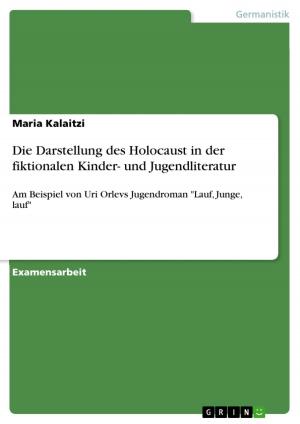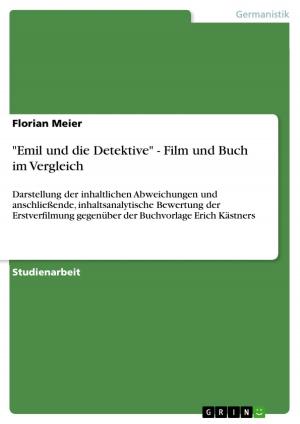SCOR - Supply Chain Operations Reference-Modell
Supply Chain Operations Reference-Modell
Business & Finance, Industries & Professions, Industries| Author: | Dominic Schnoor | ISBN: | 9783638434249 |
| Publisher: | GRIN Verlag | Publication: | November 1, 2005 |
| Imprint: | GRIN Verlag | Language: | German |
| Author: | Dominic Schnoor |
| ISBN: | 9783638434249 |
| Publisher: | GRIN Verlag |
| Publication: | November 1, 2005 |
| Imprint: | GRIN Verlag |
| Language: | German |
Studienarbeit aus dem Jahr 2005 im Fachbereich BWL - Industriebetriebslehre, Note: 1,3, Private Fachhochschule für Wirtschaft und Technik Vechta-Diepholz-Oldenburg; Abt. Vechta (Fachhochschule für Wirtschaft und Technik), Veranstaltung: IBL, 13 Quellen im Literaturverzeichnis, Sprache: Deutsch, Abstract: The conditions for competition are changing dramatically today. Various new challenges for enterprises are the result. One way to cope with these new challenges is Supply Chain Management. But this method is not easy to establish, because complex, dynamic and opaque processes have to be understood, created and combined. Besides modern information and communication technologies, one needs most of all specialized tools to improve the supply chain performance. This paper deals with the most successful and well known of these tools, SCOR. The supply chain operations reference (SCOR) model is a strategic planning tool, which allows to simplify the complexity of supply chain management. Therefore it reduces the processes of the supply chain to the fundamental activities of Sourc, Make, Deliver and Return with an overarching Plan activity to coordinat the entire supply chain. I will begin with introducing SCOR, its intention and the areas where it can be used. After that, I will proceed with describing the structure and functions of the different levels of SCOR. Moreover, I will show how SCOR also includes standard metrics to measure process performance and benchmarking- methods, which offers transparency of processes and costs. After giving an overview of SCOR's components, I will examine the advantages and disadvantages of SCOR. This paper is therefore aiming at providing a thorough overview of a much discussed tool to improve supply chains in business.
Studienarbeit aus dem Jahr 2005 im Fachbereich BWL - Industriebetriebslehre, Note: 1,3, Private Fachhochschule für Wirtschaft und Technik Vechta-Diepholz-Oldenburg; Abt. Vechta (Fachhochschule für Wirtschaft und Technik), Veranstaltung: IBL, 13 Quellen im Literaturverzeichnis, Sprache: Deutsch, Abstract: The conditions for competition are changing dramatically today. Various new challenges for enterprises are the result. One way to cope with these new challenges is Supply Chain Management. But this method is not easy to establish, because complex, dynamic and opaque processes have to be understood, created and combined. Besides modern information and communication technologies, one needs most of all specialized tools to improve the supply chain performance. This paper deals with the most successful and well known of these tools, SCOR. The supply chain operations reference (SCOR) model is a strategic planning tool, which allows to simplify the complexity of supply chain management. Therefore it reduces the processes of the supply chain to the fundamental activities of Sourc, Make, Deliver and Return with an overarching Plan activity to coordinat the entire supply chain. I will begin with introducing SCOR, its intention and the areas where it can be used. After that, I will proceed with describing the structure and functions of the different levels of SCOR. Moreover, I will show how SCOR also includes standard metrics to measure process performance and benchmarking- methods, which offers transparency of processes and costs. After giving an overview of SCOR's components, I will examine the advantages and disadvantages of SCOR. This paper is therefore aiming at providing a thorough overview of a much discussed tool to improve supply chains in business.















